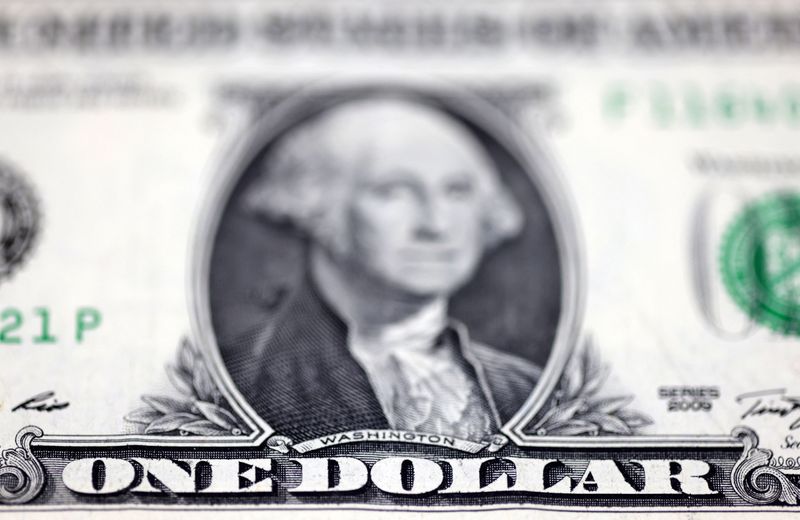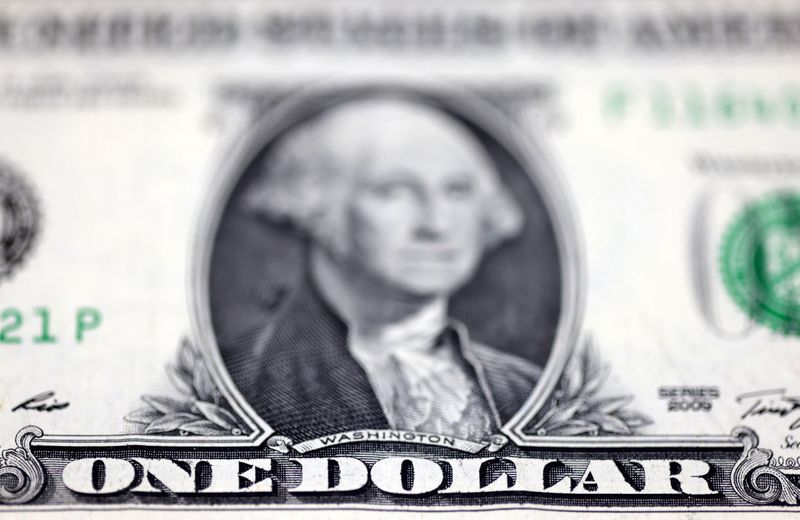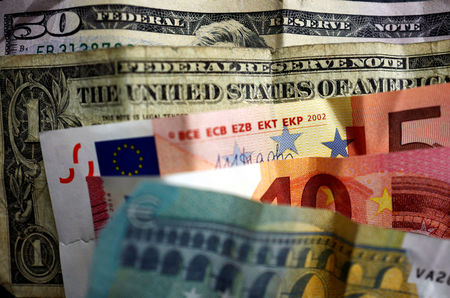
By Ankur Banerjee and Greta Rosen Fondahn
SINGAPORE (Reuters) -The euro edged lower against the dollar on Monday, while markets continued to digest the recent string of central bank meetings that pushed the dollar to a two-year high and set expectations for globally diverging rate cut paths in 2025.
The dollar index, which measures the U.S. currency against six of its largest peers, resumed its upward path, after closing lower on Friday. The index was last up 0.39% at 108.2.
The Federal Reserve last week shocked markets by projecting a measured pace of rate cuts ahead, sending Treasury yields and the dollar surging, while casting a shadow on other economies, especially emerging markets.
U.S. inflation data on Friday showed only a modest rise last month, easing some concerns about the pace of U.S. rate cuts next year. Still, the annual increase in core inflation, excluding food and energy, remained stubbornly above the U.S. central bank’s 2% target.
Investor sentiment also lifted when a U.S. government shutdown was averted by Congress’ passage of spending legislation early on Saturday.
“The mood in the financial markets is positive … after a U.S. shutdown was avoided with Congress passing a new budget bill,” said Sydbank analysts in a note.
Shifting expectations around rate cuts have left the dollar index near Friday’s two-year high of 108.54.
Traders are pricing in 38 basis points of rate cuts next year, shy of the two 25-bp rate cuts the Fed projected last week. The Fed had projected four cuts for 2025 in September. Market pricing has pushed the first easing of 2025 out to June, with a cut in March priced at around 53%.
The euro, on the other hand, was languishing at $1.0392 on Monday, down 0.38% on the day, and trading near late November’s two-year low.
European Central Bank President Christine Lagarde said the euro zone was getting very close to reaching the ECB’s medium-term inflation goal, according to an interview published in the Financial Times on Monday.
Earlier in December, Lagarde said the central bank would cut interest rates further if inflation continued to ease towards its 2% target, as curbing growth was no longer necessary.
The single currency has fallen 15% versus the dollar in the last three months, reflecting diverging expectations of the central bank action looming ahead.
Markets currently price in 125 bps in rate cuts from the ECB next year.
“Lagarde optimism hints at further cautious cuts,” said MUFG analysts in a note, but added that there was an “element of caution” in the ECB president’s comments due to a still-high level of services inflation.
“Our view for the forecast profile for euro/dollar remains that the euro will drop to around the parity level in the first quarter of next year before then stabilising and recovering moderately in the second half of the year.”
The yen loitered around 157 per dollar on Monday, keeping alive the possibility of intervention.
Other currencies took a breather ahead of the start of 2025. The Aussie last fetched $0.6237, while the kiwi was at $0.5640.
In a holiday-curtailed week, trading volumes are likely to thin out as the year-end approaches.
YEN FRAIL AGAIN
The dollar’s rise, coupled with the Bank of Japan standing pat last week and Governor Kazuo Ueda’s comments reducing the odds of a Japanese rate hike next month, has left the yen rooted near weak levels that could prompt the authorities to intervene.
The yen was 0.39% easier at 157.04 per dollar, near a five-month low it touched on Friday. The yen’s slide has brought out verbal warnings from authorities in Tokyo, with analysts expecting more jaw-boning through the end of the year.

The currency has been under pressure from a strong dollar and a wide interest rate gap that persists despite the Fed’s rate cuts. It is down more than 10% this year against the dollar and set for a fourth straight year of declines.
“The precarious element is we are now entering a period of thinner liquidity, so policymakers and market participants have to deal with the elevated risk of rapid moves that could push the yen to levels that have led to intervention in the past,” said Kyle Rodda, senior financial market analyst at Capital.com.
This post is originally published on INVESTING.



